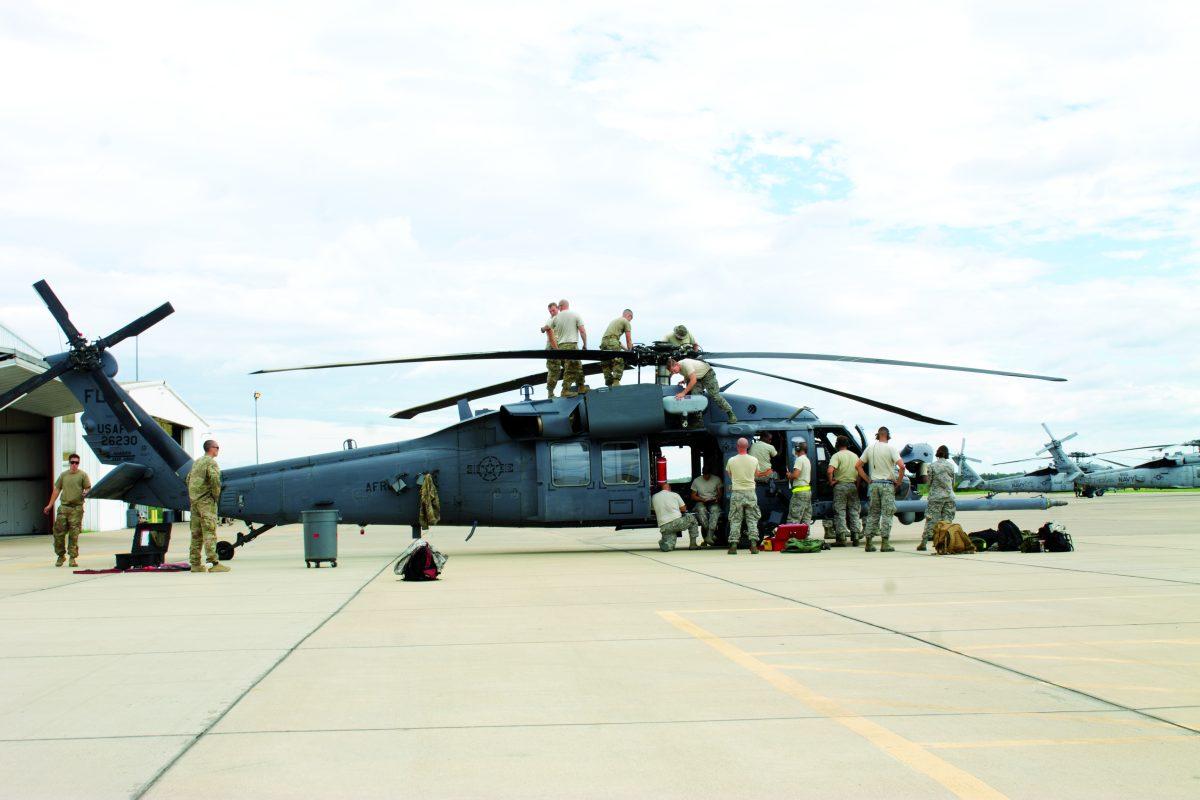When disaster strikes, first responders communicate using a strong controlled network, which helps control the flow of information. However, this network can be neutralized, leaving people in danger.
Receiving and delivering critical information during a disaster plays an important role in effective emergency response. However, because of unexpected repercussions of a disaster, such as power shortages and telephone tower damage, the network infrastructure that is vital to communication during emergency response can be compromised.
To address the possibility of network interference and unreliability during an emergency, computer science professor Radu Stoleru and his team have devised a system to improve the transition of critical information for emergency responders.
“The technology is pretty important so we need to do everything we can to make sure that that network is available to first responders at all times,” Walt Magnussen, Stoleru’s research partner and director of Internet2Technology and the Academy of Telecommunications and Learning Technologies said.
Stoleru said that The First Responder Network Authority (FirstNet), a byproduct of the Middle Class Tax Relief and Job Creation Act of 2012, is an investment to build a broadband network for public safety. Magnussen said FirstNet designated AT&T with the task of creating this federal network — a separate network built with prioritization for first responders.
“If the network is down because of the infrastructure damage, then this type of technology, sometime in the future, when it’s available, would let first responders get around those types of problems,” Magnussen said.
Stoleru’s current research is focused on the development of DistressNet-NG, the second generation of DistressNet, which was developed in 2011.
Stoleru said this new version will allow emergency responders to have access to broadband communication and data, where they’ll be able to send and receive video streams and communicate in situations where there’s no communication infrastructure.
“We are bringing new infrastructure and more mobile devices are also able to talk to each other,” Stoleru said. “When you drive on the highway and see cell towers that allow your phone to connect to the network, if those towers are gone, we can still enable mobile devices to communicate, send data, receive data and also to process this data. This data processing that typically takes place in a cloud, we can do it on mobile devices.”
Cohesive communication between the researchers involved will be an important part of developing a system that is fielded and useful in saving lives, Stoleru said.
“Our project is for three years and we already have ideas for things that we have not proposed to do but we would like to do … Depending on the research that we perform over the next three years, we will see how fruitful or beneficial our ideas may to be real public safety personnel,” Stoleru said.
If the DistressNet-NG research is determined to be viable, then Stoleru and his collaborators will involve first responders and the public safety community to test network viability out in the field, Magnussen said.
“You could come up with what you think is a great idea, a great way of doing something and then you put it in the hands of a police officer and you say you know that really doesn’t work. So a part of what we’re doing is testing and the implementation phase of it.” Magnussen said.
Jason Moats, associate division director for the Emergency Services Training Institute with TEEX, said it will be beneficial to understand how to better use this research, once completed, in the field.
“What this research, and research like it, will do is help us identify ways in which we can get that to the point of consumption, whether it’s in the fire truck or the police car,” Moats said. “It will also help us to send information from the field and back in a more stable, better way.”
Professor, experts aim to improve emergency response
August 30, 2017
Photo by Photo by Meredith Seaver
Airmen from the 920th Rescue Wing out of Patrick Air Force Base, Florida prepare a helicopter for final inspection before being deployed to Houston to assist in rescue efforts.
Donate to The Battalion
Your donation will support the student journalists of Texas A&M University - College Station. Your contribution will allow us to purchase equipment and cover our annual website hosting costs.




















